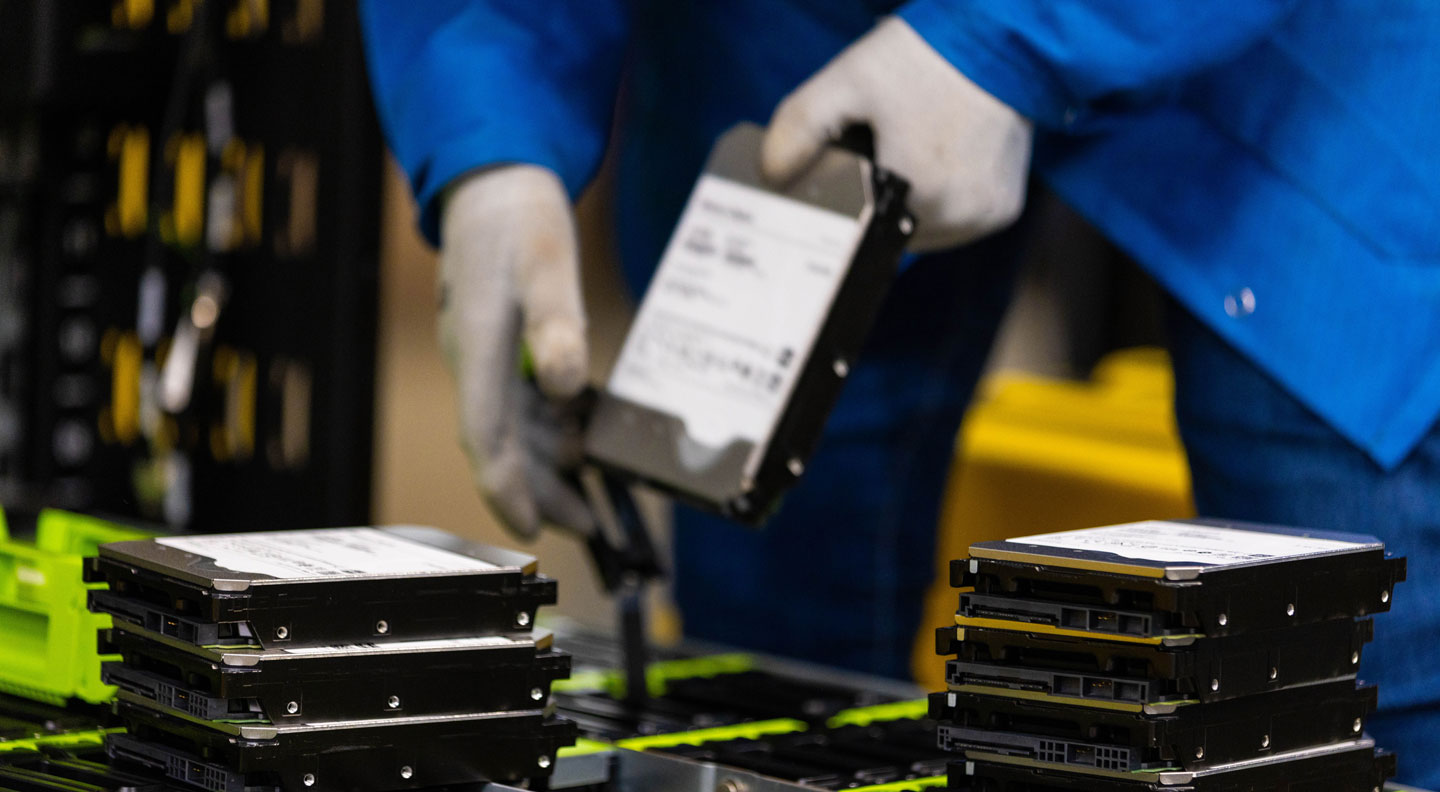In today’s data-driven world, information is one of a company’s most valuable — and most vulnerable — assets. From customer records to financial data, every device in your organization stores sensitive information that could expose you to serious risks if it falls into the wrong hands. While many businesses focus heavily on protecting data during its lifecycle, fewer pay equal attention to what happens after that data is no longer needed. Simply deleting files or reformatting hard drives is not enough. True protection comes from one essential process: Certified data destruction.
Why simple deletion isn’t secure
When a file is deleted, it doesn’t actually disappear — it’s merely marked as “free space” until new data overwrites it.
That means skilled attackers or recovery software can often retrieve supposedly “deleted” information, even from drives that appear empty.
For organizations handling personal data, intellectual property, or financial records, this is a major security and compliance concern.
Every retired laptop, server, or external drive could potentially expose sensitive information if not properly handled.
Certified data destruction ensures that every bit of data is permanently erased or physically destroyed, making recovery impossible — and giving your business complete peace of mind.
Certified data destruction: what it really means
Certified data destruction isn’t just about wiping drives — it’s about following a documented, auditable process that meets internationally recognized standards.
Trusted providers use specialized software and equipment that complies with strict protocols such as NIST 800-88, ISO 27001, and DoD 5220.22-M.
Depending on your organization’s needs, this process may include:
- Data wiping — overwriting data multiple times with random patterns.
- Degaussing — demagnetizing the drive to render data unreadable.
- Physical destruction — shredding or crushing drives beyond recovery.
After the process is completed, the provider issues a Certificate of Destruction, proving that data was erased in accordance with compliance and security standards. This documentation is crucial for audits, legal protection, and internal governance.
Compliance, accountability, and reputation
In the age of the GDPR, HIPAA, and other data privacy laws, organizations have a legal and ethical responsibility to protect personal information — not just while it’s being used, but also when it’s retired.
Failure to properly destroy data can lead to severe consequences:
- Costly fines and regulatory penalties.
- Legal action from clients or data subjects.
- Irreversible damage to your reputation and customer trust.
By partnering with certified destruction specialists, businesses can demonstrate compliance, accountability, and transparency. It’s a proactive step that shows customers and regulators alike that you take data protection seriously.
Part of a circular IT lifecycle
Certified data destruction isn’t only about security — it’s also about sustainability. Secure destruction is a key part of broader ITAD services (IT Asset Disposition), which manage the entire lifecycle of IT hardware. In many cases, organizations choose On site data destruction to ensure that sensitive information is securely eliminated before any device leaves their premises. Through this process, devices that have been securely wiped can be refurbished and reused, while components that have reached end-of-life are recycled responsibly. Valuable materials such as copper, aluminum, and gold are recovered, reducing the need for new raw materials and minimizing electronic waste. This combination of data protection and environmental responsibility makes certified data destruction not just a compliance necessity, but also a vital element of circular IT strategy.
Why professional partners matter
Data destruction is not a task to be taken lightly. Attempting to handle it in-house without the right expertise, tools, or certifications can lead to serious risks — including incomplete erasure and non-compliance.
Professional partners bring:
- Certified methods that meet global standards.
- Secure logistics for collecting and transporting IT assets.
- Chain-of-custody documentation for full traceability.
- Detailed reporting that stands up to internal or external audits.
By working with trusted specialists, businesses ensure every device is handled securely from collection to final destruction — eliminating risks at every stage of the process.
Conclusion: True protection goes beyond deletion
In a world where data breaches can destroy years of trust in a single day, deleting files simply isn’t enough.
Certified data destruction provides the assurance that sensitive information is eliminated completely, compliantly, and sustainably.
Whether it’s part of a broader IT asset management strategy or a standalone security measure, this process protects not only your data but also your reputation, your clients, and your future.
In short: real data security doesn’t end when you press “delete” — it begins with certified destruction.

 Celebrity6 months ago
Celebrity6 months ago
 Entertainment5 months ago
Entertainment5 months ago
 Celebrity3 months ago
Celebrity3 months ago
 News3 months ago
News3 months ago
















